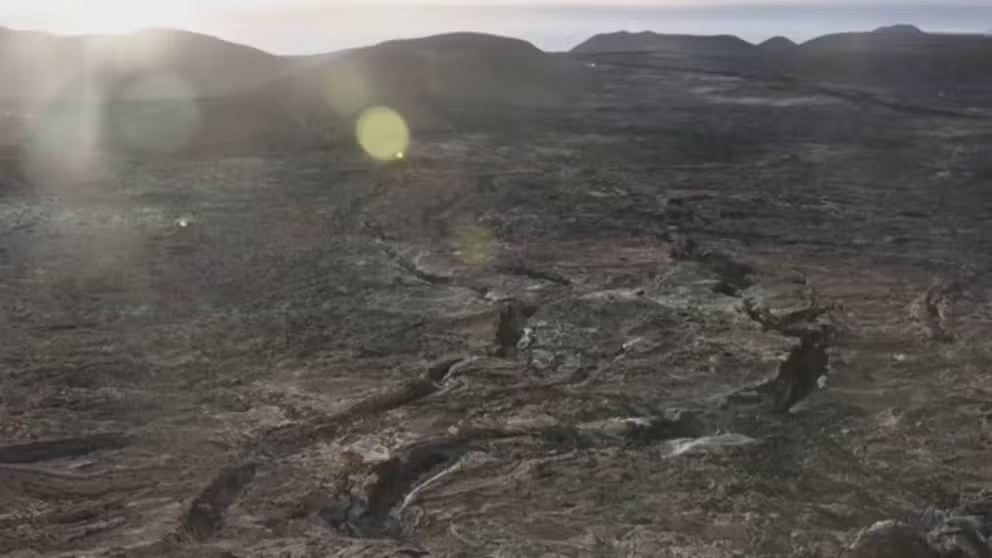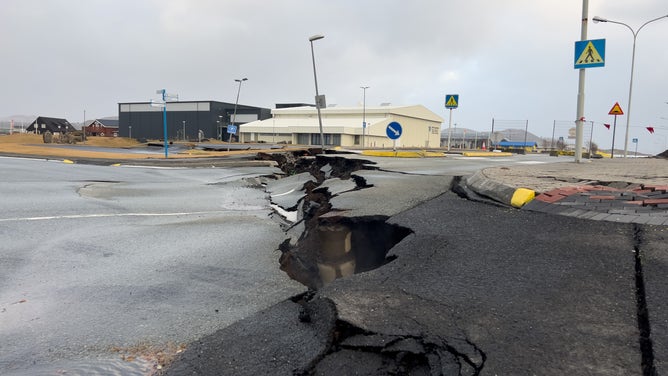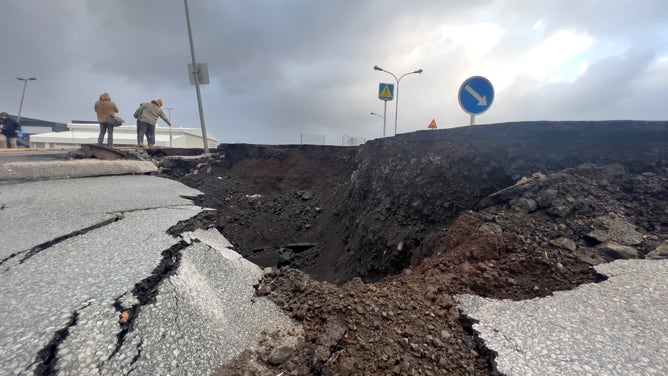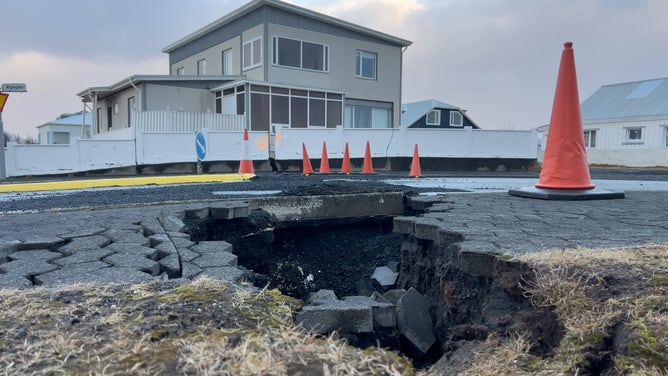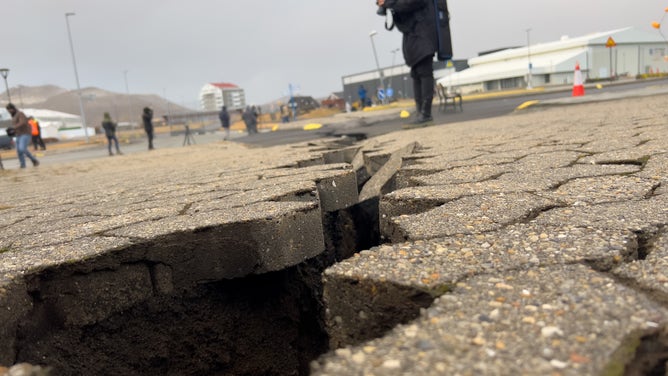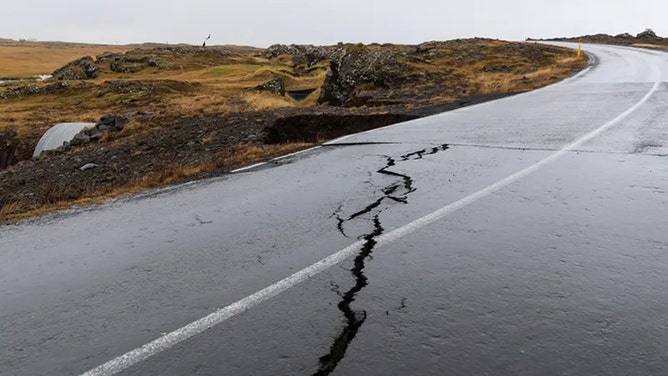Iceland's iconic tourist attraction remains closed following threat of volcanic eruption
Staff said they’ll reassess the reopening of the spa and hotels next week. The Blue Lagoon is a special, geothermally heated spa on the Reykjanes Peninsula. The water is reported to have a high silica content.
Aerial views of southwestern Iceland show volcanic crater, cracks
A volcanic eruption is possible near the region of Grindavik in Iceland. This video shows an aerial perspective of the area. (Courtesy: Reuters)
GRINDAVIK, Iceland – The most popular tourist destination in Iceland remains closed despite decreasing signs of a volcanic eruption on the Reykjanes Peninsula.
The Blue Lagoon geothermal spa in Grindavík has been closed since Nov. 9 over concerns of seismic activity and a volcanic eruption.
Earthquake swarms and the formation of magma below the surface have damaged roads and buildings around the town, with a population of only 3,600 people.
"Latest geodetic modeling results suggest that the magma inflow to the dike that formed on November 10 has likely ceased," forecasters at the Icelandic Met Office said during their latest update. "The chances of an eruption happening along the dike at this time have therefore significantly decreased. However, magma accumulation continues beneath Svartsengi."
WATCH A VOLCANO ERUPT OUTSIDE OF ICELAND’S CAPITAL
Svartsengi is about 2.5 miles northeast of Grindavík, but forecasters warn activity could quickly return to ground beneath the fishing village.
"Following a magma propagation, the likelihood of an eruption increases…It is most likely that magma will propagate from Svartsengi into the previously formed dike on November 10. Making it the most likely area for an eruption," forecasters said.
Experts say it is possible, despite weeks of activity, that an eruption never occurs. But until specialists deem the area safe, businesses and homes remain evacuated.
Blue Lagoon staff said they’ll reassess the reopening of the spa and hotels on Dec. 14 and will have a future announcement.
The Nordic island nation is not a stranger to volcanic activity due to its location on the Eurasian and North American tectonic plates.
Iceland is home to around 130 volcanic mountains, many of which are considered inactive.
